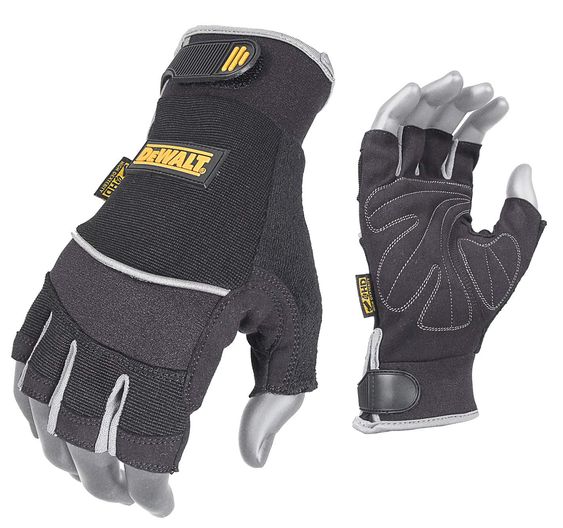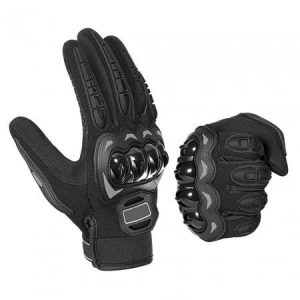How to Measure Your Hand for Motorcycle Gloves?
Motorcycle gloves are an essential piece of safety gear, protecting your hands from abrasion, impact, and the elements. But an ill-fitting glove can be just as dangerous as no glove at all. A glove that’s too loose can slip and compromise your grip on the controls, while a glove that’s too tight can restrict blood flow and dexterity.
This guide will walk you through the proper way to measure your hand for motorcycle gloves, ensuring you find the perfect fit for optimal comfort and safety.
Why a Perfect Fit Matters
Motorcycle gloves come in a wide range of sizes, from extra-small to extra-large. However, sizing can vary slightly between brands, and even your dominant hand might be a different size than your non-dominant hand.
Here’s why getting the right size motorcycle glove is crucial:

- Safety: A loose glove can bunch up and reduce your feel for the controls, potentially leading to accidents. Conversely, a tight glove can restrict blood flow and movement, hindering your ability to brake and maneuver effectively.
- Comfort: A well-fitting glove will feel snug but comfortable, allowing for easy movement and dexterity. An ill-fitting glove can cause irritation, fatigue, and blisters.
- Protection: Motorcycle gloves are designed to absorb impact and protect your hands from abrasions. A loose glove won’t provide proper coverage, while a tight glove can restrict the padding’s ability to absorb impact.
Grabbing the Right Tools
Before you dive into measuring, you’ll need a few simple tools:
- Soft measuring tape: A tailor’s measuring tape is ideal, but a flexible tape measure used for sewing will also work. Avoid using a metal tape measure, as it can be uncomfortable and potentially cause injuries.
- Pen and paper: Jot down your measurements for easy reference when comparing them to size charts.
Measuring Your Hand for Motorcycle Gloves (Step-by-Step)
Now that you have your tools ready, let’s get down to measuring! Here’s a step-by-step guide:

-
Find your dominant hand: Most people have a slightly larger dominant hand. Measure the hand you use to operate the throttle (usually your right hand). If both hands are the same size, measure either one.
-
Make a fist: Gently close your hand into a loose fist, mimicking your grip on a motorcycle handlebar. This ensures the measurement accounts for the natural curvature of your hand when riding.
-
Measure the palm circumference: Wrap the measuring tape around the widest part of your hand, just below your knuckles. Exclude your thumb from the measurement. Hold the tape measure snug but not constricting. Make sure the tape lies flat against your hand.
-
Record your measurement: Note down the measurement in inches or centimeters, depending on the measuring tape you’re using. If the measurement falls between sizes, round up to the nearest half-inch or centimeter.
-
Optional: Measure your hand length (for reference): While not essential for determining glove size, some riders like to measure their hand length for additional reference. To do this, measure from the tip of your middle finger to the base of your palm.
Consulting the Size Chart
Once you have your hand circumference measurement, it’s time to consult the size chart for the specific motorcycle glove you’re interested in. Most motorcycle glove manufacturers will provide a size chart on their website or product packaging. The chart will typically list the hand circumference in inches or centimeters and correlate it with the corresponding glove size (e.g., small, medium, large).
Here are some things to keep in mind when consulting the size chart:
- Brand variations: As mentioned earlier, sizing can vary slightly between brands. So, even if you wear a medium glove in one brand, you might need a large in another. Always refer to the specific size chart for the glove you’re considering.
- Material considerations: Leather motorcycle gloves tend to stretch slightly over time, so you might be able to get away with a slightly snugger fit. Conversely, textile gloves generally don’t stretch as much, so you might want to opt for a slightly looser fit.
Additional Tips for Finding the Perfect Motorcycle Gloves
Here are some extra pointers to ensure you find the perfect-fitting motorcycle gloves:

- Try before you buy: Whenever possible, try on the gloves before purchasing them. This allows you to assess the fit, feel the materials, and ensure they offer the dexterity and comfort you need.
- Consider your riding style: If you ride aggressively or for long distances, you might prioritize a snugger fit for maximum feel and control. For more casual riding or in hot weather, a slightly looser fit might be more comfortable.
- Break-in period: Keep in mind that new leather gloves may feel a bit stiff at first. They will usually soften and mold to your hands over time.
- Double-check finger length: While the palm circumference is the primary measurement for sizing, occasionally you might find that your fingers are longer or shorter than average for your hand size. If this is the case, check the glove’s fingertip length specifications to ensure they won’t be too short or bunch up at the ends.
Beyond the Measurement: Motorcycle Gloves Features to Consider
While a proper hand measurement is crucial, there are other glove features to consider when making your purchase:

- Gauntlet style: Motorcycle gloves come in various gauntlet styles, including short gauntlets (wrist-length), mid-gauntlets (covering part of the forearm), and long gauntlets (covering the entire forearm). Consider the level of protection you need and your riding style when choosing a gauntlet style.
- Knuckle protection: Look for gloves with hard knuckle protectors to absorb impact in case of a fall.
- Palm protection: Padding on the palm can provide additional protection against abrasions.
- Touchscreen compatibility: If you plan on using your touchscreen devices while wearing gloves, look for gloves with touchscreen-compatible fingertips.
- Ventilation: Perforated leather or mesh panels can improve breathability and keep your hands cool in hot weather.
- Waterproof materials: Consider waterproof or water-resistant gloves for riding in wet conditions.
Don’t Forget About Your Wrist!
While measuring your hand is important, don’t forget about your wrist! The closure system of the glove should provide a snug but comfortable fit around your wrist. Here are some common closure types:

- Velcro straps: These offer adjustability but might not be as secure as other closure types.
- Buckle closures: Buckles provide a more secure fit and are often used on higher-end gloves.
- Combination closures: Some gloves combine Velcro straps with a buckle for a balance of adjustability and security.
Taking the Perfect Fit on the Road
By following these tips and carefully measuring your hand, you’ll be well on your way to finding the perfect-fitting motorcycle gloves. Remember, a well-fitting glove should feel snug but comfortable, allowing for easy movement and dexterity. It should also provide adequate protection for your hands and wrists.
Don’t hesitate to try on different gloves and sizes to find the perfect fit for you. With the right pair of gloves, you can hit the road with confidence, knowing your hands are protected and comfortable for every ride.
